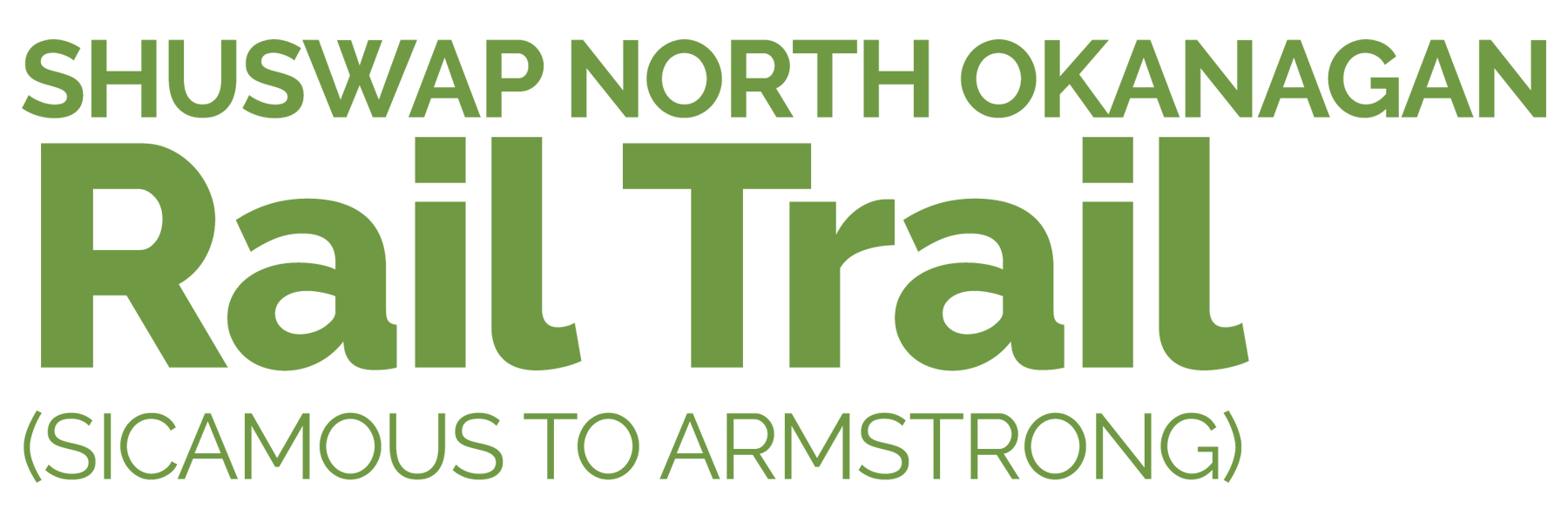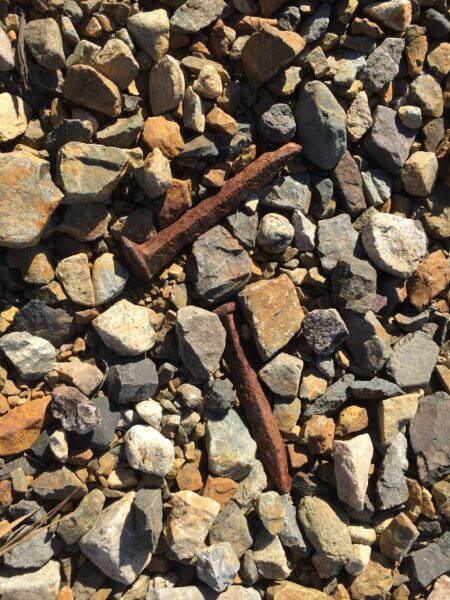CP Rail Discontinuance
In August 2009, CP Rail began the formal process of discontinuing the line between Sicamous and Armstrong. Initially no agreement was reached to purchase the line by either private expressions-of-interest or provincial and municipal governments. As a result, CP formally discontinued the northern segment (mile: 0.3 to 16.4) in November 2012 and the southern segment (mile: 16.4 to 31.63) in April 2014.
Splatsin Acquisition
In 2014, Splatsin leadership successfully negotiated with CP Rail to purchase 11.7 hectares (29 acres) of the discontinued railway corridor between Sicamous and Armstrong. This includes a 1.5 kilometre section south of Sicamous along the shores of Mara Lake, and a 6 kilometre section south of Enderby. The agreement was an important acknowledgement of the Splatsin’s role as primary caretaker of the land in the region and the title and rights of the Secwepemc Nation through which the abandoned rail corridor runs.
Agreement to Work Together
Splatsin Chief and Council recognized the long-term tourism and transportation potential for the corridor, as well as the opportunity to revitalize Splatsin culture and connections back to the land. In January 2015, they invited municipal and regional leadership to join them in developing an agreement to work together to acquire the remaining sections of the corridor from CP Rail and develop a plan for its future.
Splatsin, regional and municipal leadership confirmed their intention to work together cooperatively to acquire the Okanagan Shuswap Railway through a jointly signed Memorandum-of-Understanding. An Inter-Jurisdictional Negotiating Team was appointed and Terms-of-Reference developed to jointly acquire the remainder of the rail corridor from the CPR.
Provincial Support/Regional Alternate Approval Process
In March 2017, the Province of BC announced a commitment of $2.17 million dollars toward the remaining purchase cost of $6.5 million dollars. The RDNO and CSRD agreed to split the unfunded cost on a 50:50 basis, each paying $2.17 million dollars. Both received elector authorization to borrow funds through an alternate approval process in July 2017, with the balance coming from the Sicamous/Area E Economic Opportunity Fund ($250,000), and the Revelstoke/Area B Economic Opportunity Fund ($100,000).
RDNO/CSRD Acquisition
In December 2017, the Regional District of North Okanagan (RDNO) and the Columbia Shuswap Regional District (CSRD) successfully concluded the purchase of the remaining sections of the CP Rail corridor, excluding the sections owned by the Splatsin, after a legal and environmental examination of the property coming back as being satisfactory.
Joint Agreement to Develop, Operate, Maintain
To ensure the corridor remains contiguous, the three owner jurisdictions (i.e. Splatsin, RDNO & CSRD) have agreed that the corridor will be developed, operated and maintained for its use as a continuous recreational trail in the near future, particularly pedestrian and bicycle transportation, as well as future potential use as a continuous multi-modal regional transportation corridor. Further, the owner jurisdictions will covenant with each other under the terms of a statutory right of way agreement for public access over those sections of the corridor that they own, to maintain it (and not encumber it) in perpetuity for these ultimate uses.
Thanks to successful funding announced in the spring of 2019 through the Province of BC’s Rural Dividend Program and leveraged support through the Columbia Shuswap Regional District Area E and District of Sicamous’ Economic Opportunity Funds, planning is moving forward quickly through a jointly appointed Splatsin/RDNO/CSRD Technical Operational Committee under direction of the Inter-Jurisdictional Rail Trail Governance Advisory Committee. The Shuswap Trail Alliance has been engaged by the Sicamous-to-Armstrong Rail Corridor Governance Advisory to adminster the day-to-day operations of the project design and planning stages with the Technical Operational Committee.
Planning for the rail trail includes assessments for First Nations archeological and cultural heritage values, geotechnical, rock scaling, water drainage, erosion, and environmental management, as well as structural, safety, road crossings, and agricultural considerations. Thomas Simkins of Urban Systems Ltd is the project’s lead technical design consultant and engineer-on-record. He is helping us to coordinate the many sub consultants needed to complete the design.
As well, the inter-government partners are working on developing crossing and lease agreements for adjacent properties, businesses, and agricultural operators. Consultation with adjacent agricultural operators will be initiated through the Agricultural Land Commission upon formal submission of an application that should be ready in the fall of 2019. Public information sessions were held in the fall/winter of 2019.

